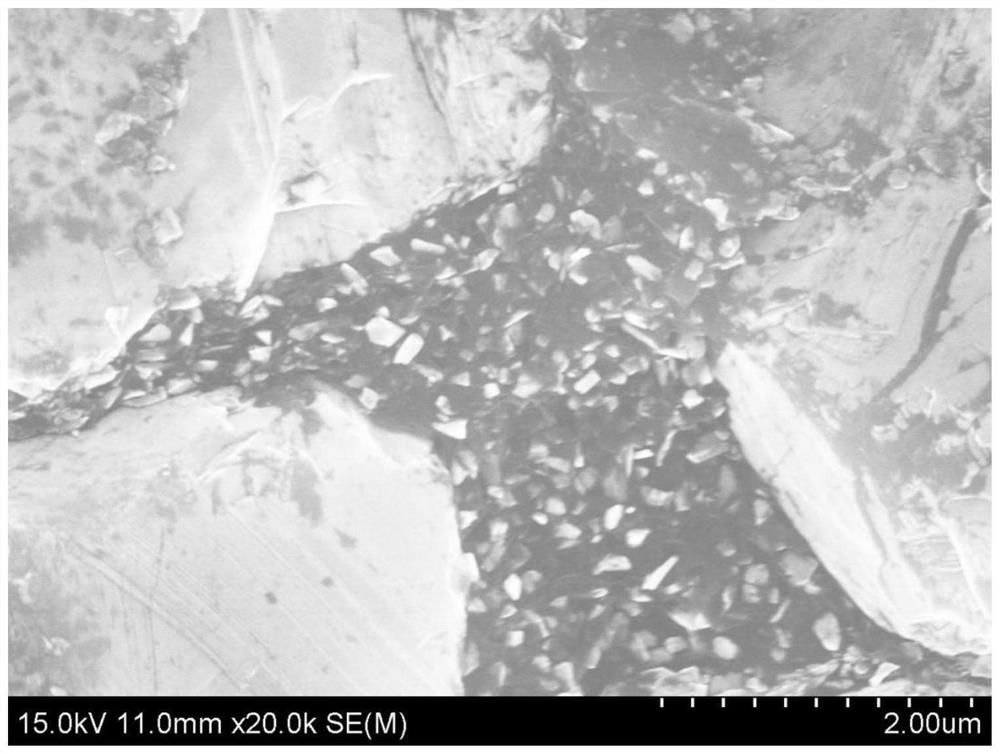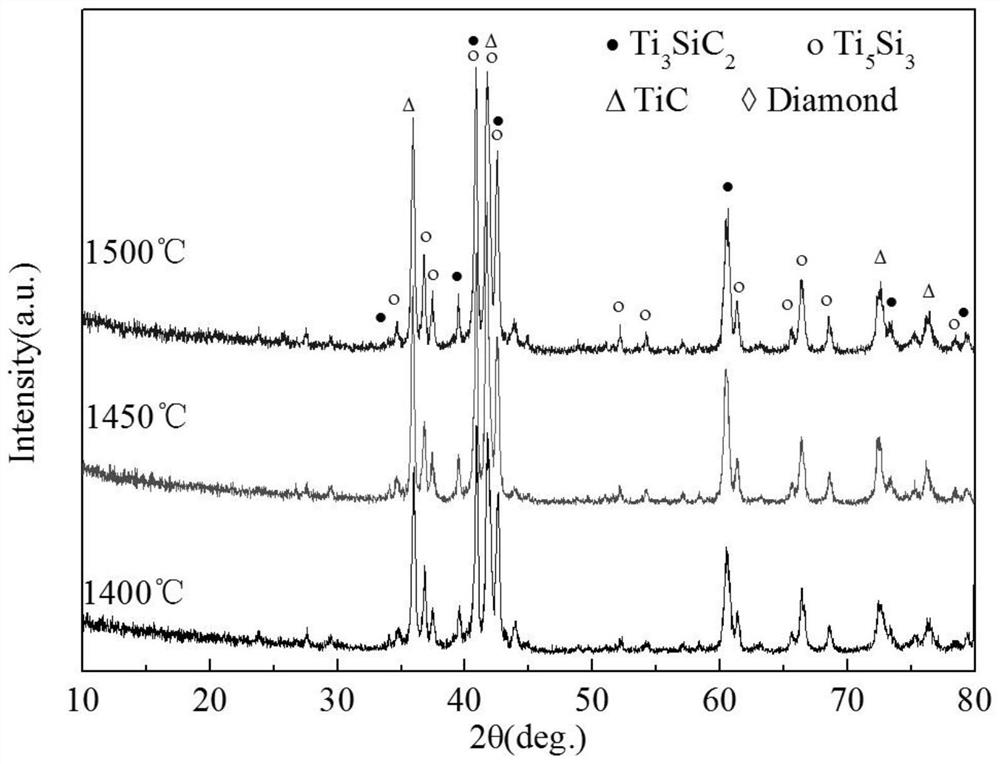Polycrystalline diamond combined with compound generated through in-situ reaction and preparation method of polycrystalline diamond
A technology of polycrystalline diamond and in-situ reaction, which is applied in the field of superhard composite materials and can solve problems such as leaving soft spots
- Summary
- Abstract
- Description
- Claims
- Application Information
AI Technical Summary
Problems solved by technology
Method used
Image
Examples
preparation example Construction
[0032] The invention provides a method for preparing polycrystalline diamond bonded by an in-situ reaction, comprising the following steps:
[0033] The Ti powder, Si powder and nano-diamond are ball milled for mechanical alloying to obtain a binder material; the molar ratio of the Ti powder to Si powder is equal to 3; the molar ratio of the nano-diamond to Si powder is >2 and ≤5 ;
[0034] Mixing the binder material with micro-diamonds to obtain a mixture;
[0035] Prepressing the mixture to obtain a precompact;
[0036] Sintering the pre-compact under high temperature and high pressure to obtain polycrystalline diamond bonded by in-situ reaction formation compounds;
[0037] The high temperature and high pressure sintering includes sequentially performing the first high temperature and high pressure sintering and the second high temperature and high pressure sintering; the temperature of the first high temperature and high pressure sintering is 1100-1300°C, and the holding t...
Embodiment 1
[0067] (1) 35 grams of binder material, according to the molar ratio Ti: Si: nano-diamond=3:1:3 proportioning (wherein the nano-diamond particle diameter is 2~12 nanometers accounted for 20% by mass, particle diameter 100 nanometers accounted for 80%); micron diamond 65g (wherein particle size is 10 micron 35g, 6 micron 20g, 0.5 micron 10g); first the titanium powder weighed and silicon powder and nano-diamond are mixed, under the argon condition of glove box, pack ball mill tank neutralize and seal; take it out and put it into a planetary ball mill with a ball-to-material ratio of 20:1, mechanically mix at 350r / min for 120min, and mechanically alloy to make a binder material; Open it down, put in the weighed micron diamond, and scrape and mix with the binder material evenly, and mix it by mechanical ball milling for 20 minutes to make a mixture; after stopping the machine, remove the ball milling tank, open it under argon gas in the glove box, and take out the preparation goo...
Embodiment 2
[0071] (1) 40 grams of binder material, according to the molar ratio Ti: Si: nano-diamond=3:1:5 proportioning (wherein the nano-diamond particle diameter is 2~12 nanometers account for 40% of the mass ratio, particle diameter 100 nanometers accounts for 60%), micron diamond 60g (wherein the particle size is 10 micron 35g, 6 micron 20g, 0.5 micron 5g); first the titanium powder weighed and silicon powder and nano-diamond are mixed, put into the ball mill tank under the condition of argon gas in the glove box neutralize and seal; take it out and put it into a planetary ball mill with a ball-to-material ratio of 20:1, mechanically mix at 350r / min for 120min, and mechanically alloy to make a binder material; Open it down, put in the weighed micron diamond, and scrape and mix with the binder material evenly, and mix it by mechanical ball milling for 20 minutes to make a mixture; after stopping the machine, remove the ball milling tank, open it under the condition of argon in the glo...
PUM
| Property | Measurement | Unit |
|---|---|---|
| Particle size | aaaaa | aaaaa |
| Particle size | aaaaa | aaaaa |
| Particle size | aaaaa | aaaaa |
Abstract
Description
Claims
Application Information
 Login to View More
Login to View More - R&D
- Intellectual Property
- Life Sciences
- Materials
- Tech Scout
- Unparalleled Data Quality
- Higher Quality Content
- 60% Fewer Hallucinations
Browse by: Latest US Patents, China's latest patents, Technical Efficacy Thesaurus, Application Domain, Technology Topic, Popular Technical Reports.
© 2025 PatSnap. All rights reserved.Legal|Privacy policy|Modern Slavery Act Transparency Statement|Sitemap|About US| Contact US: help@patsnap.com



